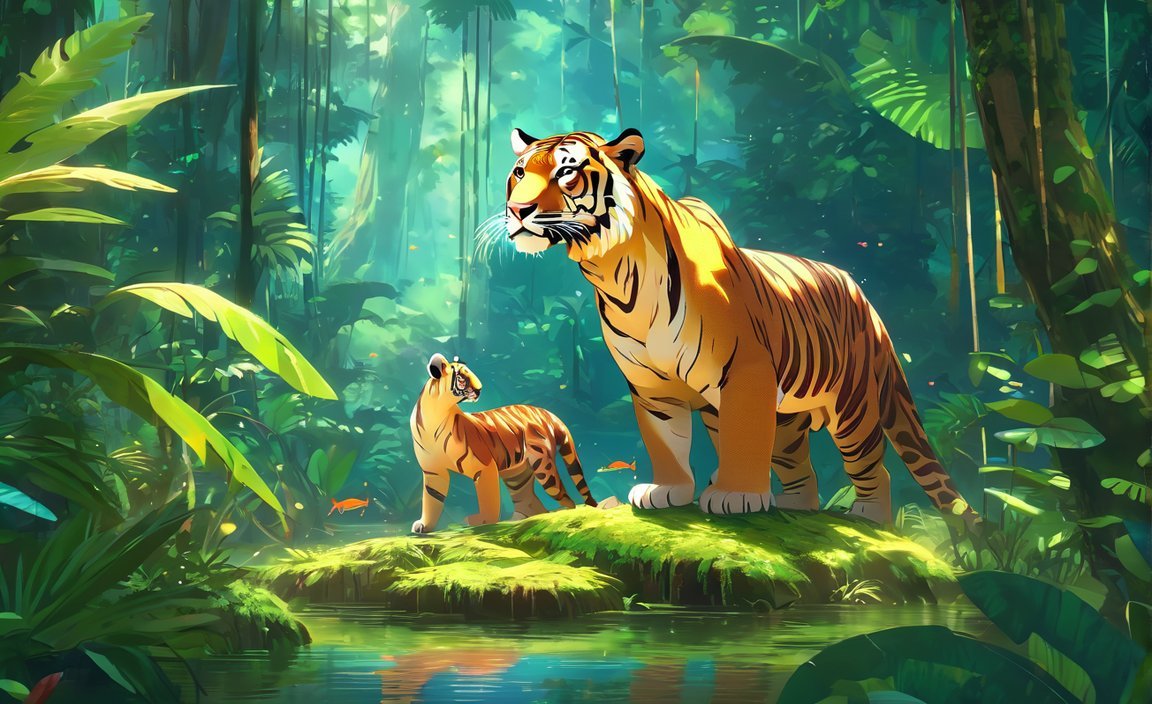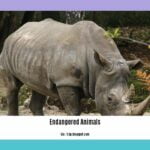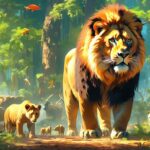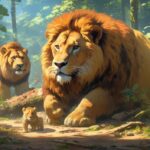Alarming Extinction Threat: Amazon Rainforest’s Iconic Animals at Risk
The Amazon rainforest, with its breathtaking diversity and awe-inspiring beauty, is not only a global treasure but also a sanctuary for countless unique and remarkable animal species. However, behind the vibrant foliage and echoing melodies, a disquieting truth looms. The very existence of some of the rainforest’s most iconic animals, such as jaguars, macaws, and river dolphins, hangs in the balance as they face an alarming threat of extinction. Deeply intertwined with the delicate ecosystems of this tropical paradise, these marvelous creatures symbolize not only the fragility of their own existence but also serve as critical indicators of the health of our planet as a whole. In this article, we delve into the dire consequences of deforestation, habitat loss, and illegal wildlife trade, shedding light on the urgent need for action to preserve and protect these extraordinary beings.
Key Takeaways:
1. Jaguars, the largest cat in the Americas, are at risk of extinction in the Amazon due to habitat destruction and loss of prey.
2. The Amazon River Dolphin, the largest freshwater dolphin in the world, is endangered due to fishing, pollution, and dam construction.
3. Giant Otters, the largest otters in the world, are vulnerable to hunting, fishing, and habitat degradation.
4. The Uakari Monkey, a red-faced primate, is significantly affected by hunting and forest fragmentation.
5. The Hyacinth Macaw, the largest flying parrot, faces threats from illegal trade, hunting, and habitat loss.
6. The South American Tapir, the largest land mammal in South America, is endangered due to hunting and habitat loss.
7. Colorful amphibians like the Poison Dart Frogs are at risk from climate change, pollution, and habitat destruction.
8. Deforestation in the Amazon may lead to the regional extinction of 38 species, including 10 mammals, 20 birds, and eight amphibians.
9. The jaguar serves as an indicator species for the health and stability of the entire rainforest ecosystem.
10. Urgent action is needed to raise awareness, strengthen environmental policies, and promote sustainable practices to protect these endangered species and the Amazon rainforest’s biodiversity.
Animals Going Extinct in the Amazon Rainforest
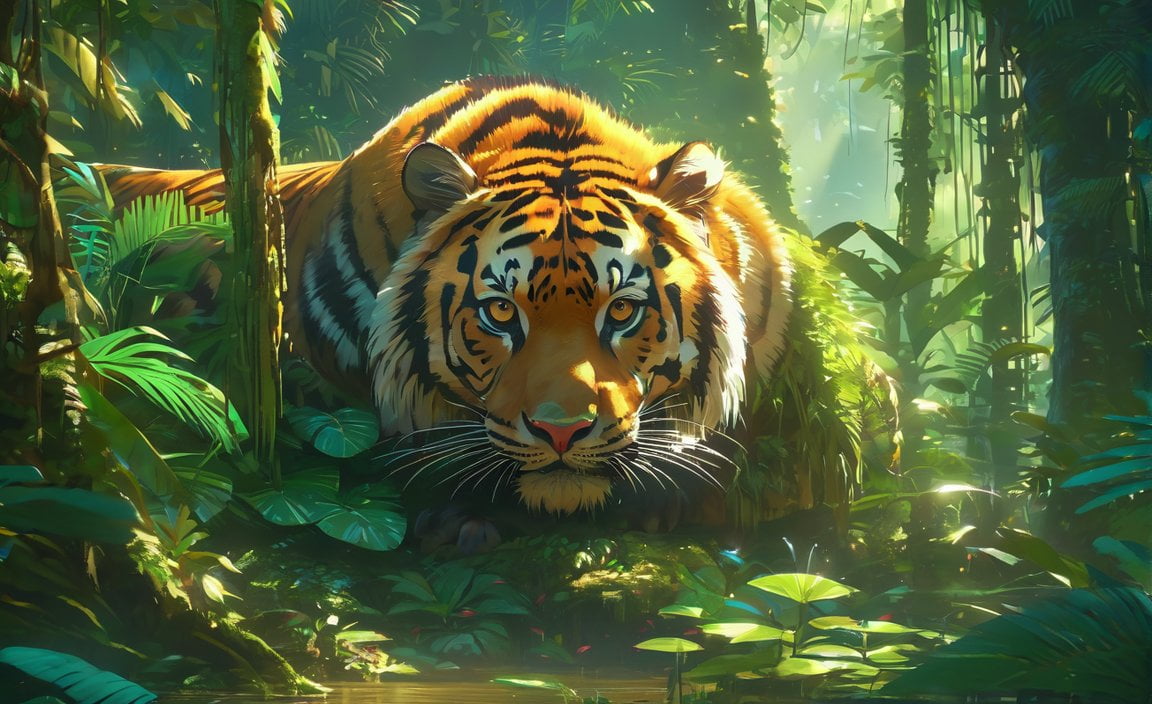
The rich biodiversity of the Amazon rainforest is under threat, with several iconic animal species facing the risk of extinction. Deforestation activities have taken a toll on their habitats, pushing them to the brink of survival. In this article, we will explore the dire situation faced by animals such as jaguars, Amazon river dolphins, giant otters, uakari monkeys, hyacinth macaws, South American tapirs, and poison dart frogs.
Jaguars: Guardians of the Amazon
Jaguars, the largest cats in the Americas, hold a special place in the hearts of many. Their stunning beauty and graceful movements make them an iconic symbol of the Amazon rainforest. However, the destruction of their habitat and loss of prey endanger their survival. If deforestation continues, these magnificent creatures may vanish from the very landscape they call home.
Amazon River Dolphins: Threatened by Human Activities
The Amazon river dolphin, the largest freshwater dolphin in the world, faces numerous threats. Fishing practices, pollution, and dam construction in the region have contributed to their endangered status. These intelligent and gentle creatures must be protected to ensure their future existence in the Amazon’s vast river systems.
Giant Otters: Holding On Against the Odds
Giant otters, the largest otters in the world, bring liveliness and energy to the rivers of the Amazon. However, they are vulnerable to hunting, fishing, and habitat degradation. Efforts must be made to preserve their natural habitats and curb destructive human activities that endanger their survival.
Uakari Monkeys: Red-Faced Primates on the Brink
The vibrant and charismatic uakari monkey, with its distinctive red face, is significantly affected by hunting and forest fragmentation. Together, we must work towards protecting their habitats and discouraging activities that harm these remarkable primates.
Hyacinth Macaws: Wings of the Rainforest
The hyacinth macaw, with its stunning blue feathers, adds a splash of color to the Amazon rainforest. However, illegal trade, hunting, and habitat loss threaten their very existence. Without immediate action, we risk losing these majestic birds forever.
South American Tapirs: Guardians of the Forest Floor
The South American tapir, the largest land mammal in South America, plays a vital role in maintaining the delicate balance of the rainforest ecosystem. Yet, hunting and habitat loss plague these gentle giants. It is our responsibility to protect their habitats and ensure their survival.
Poison Dart Frogs: Tiny Treasures at Risk
The Amazon rainforest is home to a wide variety of colorful and fascinating amphibians, including the poison dart frogs. However, climate change, pollution, and habitat destruction put these tiny treasures at risk. Their disappearance would have a significant impact on the rainforest’s biodiversity and ecological balance.
Taking Action to Preserve the Amazon’s Iconic Animals
The alarming rate of deforestation in the Amazon rainforest poses a grave threat to these incredible species. If we fail to take action, experts predict that 38 species, including 10 mammals, 20 birds, and eight amphibians, may face regional extinction within the coming years. This loss would not only be tragic in terms of biodiversity but also have far-reaching consequences for our planet’s health.
To combat the threats posed by deforestation and protect the endangered species of the Amazon, we must raise awareness and advocate for stronger environmental policies. It is crucial to enforce regulations against illegal trade, hunting, and the destruction of natural habitats. By striving for sustainable practices and supporting initiatives that promote conservation, we can make a difference in preserving the invaluable natural resource that is the Amazon rainforest and the extraordinary creatures that depend on it for survival.
Let us join forces to ensure a future where the Amazon’s iconic animals thrive, reminding us of the beauty and significance of our planet’s diverse ecosystems.
References:
- Earth.Org – 17 Amazon Rainforest Endangered Species
- Phys.org – Amazon deforestation threatens jaguars
Animals in the Amazon Rainforest are facing the threat of extinction due to deforestation. Discover how deforestation is impacting these unique species and learn about the urgent need for conservation efforts. Animal Extinction in the Amazon Rainforest
Unprecedented levels of deforestation are causing animal species to become extinct. Explore the devastating consequences of deforestation on wildlife populations and the urgent need to address this issue. Animals Becoming Extinct Due to Deforestation
The destruction of natural habitats in the Amazon Rainforest is driving animals towards extinction. Learn more about the alarming rate at which species are disappearing and the importance of protecting their delicate ecosystem. Animals Going Extinct Due to Deforestation
Numerous animal species have already vanished as a result of deforestation. Discover the heartbreaking stories of the animals that have gone extinct due to the destruction of their habitats and the urgent need for conservation initiatives. Animals That Have Gone Extinct Due to Deforestation
The devastating impact of deforestation has caused many animals to go extinct. Delve into the stories of these lost species and understand the crucial role of preventing further deforestation. Animals That Went Extinct Because of Deforestation
Impact of Deforestation on Animal Populations
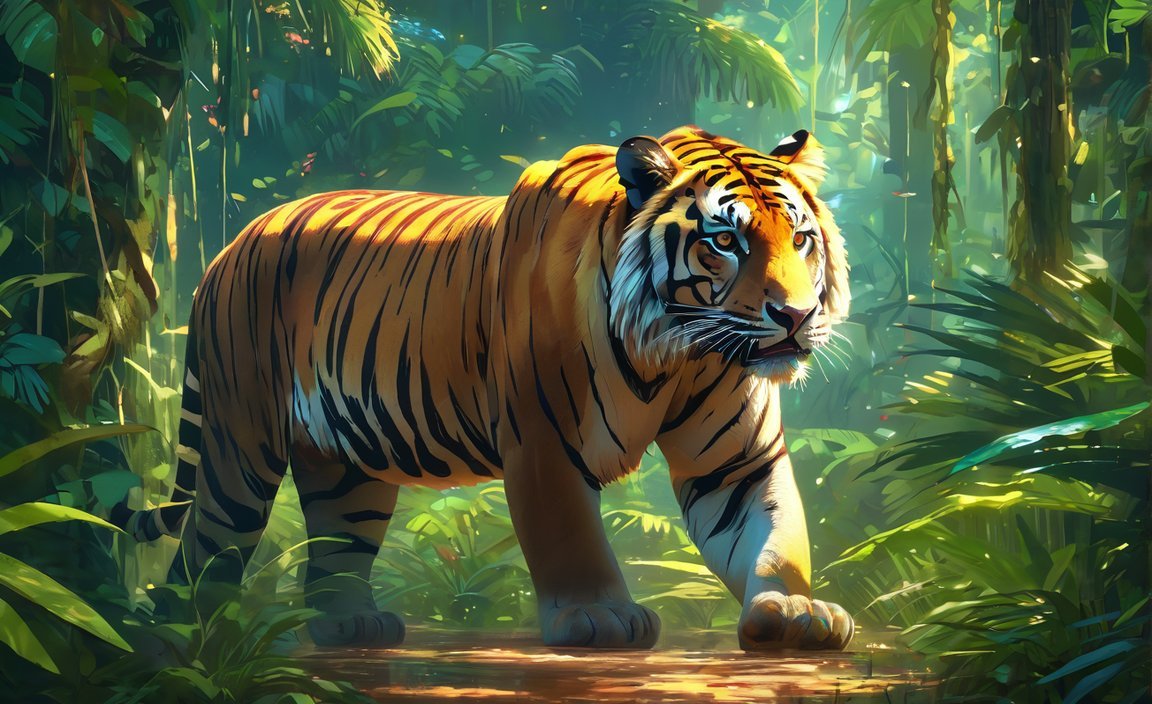
The Amazon rainforest, often referred to as the “lungs of the Earth,” is facing an alarming extinction threat due to the impact of deforestation on animal populations. This unique ecosystem, filled with extraordinary creatures, is being severely affected by human interference, putting thousands of species at risk.
The Amazon’s Carbon Storage and Extinction Risks
- The soil and vegetation of the Amazon rainforest hold approximately 200 billion tonnes of carbon, more than five times the world’s annual CO2 emissions[^1^].
- Over 10,000 species of plants and animals in the Amazon are at high risk of extinction due to the destruction of their habitat[^1^].
- Human interference in the Amazon puts more than 8,000 endemic plants and 2,300 animals at high risk of extinction[^1^].
- Deforestation is a major driver of species loss in the Amazon rainforest, exacerbating global climate change and its impact on biodiversity[^2^].
Impacts of Deforestation on Amazonian Biodiversity
- Since 2001, between 40,000 and 73,400 square miles of the Amazon rainforest have been impacted by fires, affecting 95% of all Amazonian species and up to 85% of threatened species[^3^].
- The destruction of the Amazon rainforest has profound consequences for global biodiversity, putting countless plant and animal species at risk[^3^].
- Deforestation and climate change are the primary drivers of species loss in the Amazon rainforest[^4^].
Conservation Efforts and the Path Forward
- The loss of species and destruction of the Amazon rainforest can be mitigated by combating climate change and investing in sustainable agricultural practices[^4^].
- Conservation efforts are crucial for protecting vulnerable species and preserving the unique biodiversity of the Amazon[^4^].
- Strengthening environmental regulations, implementing sustainable land-use practices, and supporting indigenous communities are key strategies for halting deforestation and promoting conservation in the Amazon[^5^].
Key Takeaways:
- The Amazon rainforest is home to an incredible variety of species, many of which are facing the risk of extinction due to deforestation.
- The destruction of their habitat puts iconic animals such as jaguars, Amazon river dolphins, giant otters, uakari monkeys, hyacinth macaws, South American tapirs, and poison dart frogs at great risk.
- Deforestation and climate change are the primary drivers of species loss in the Amazon rainforest.
- Conservation efforts, including sustainable land-use practices and support for indigenous communities, are crucial for protecting the Amazon’s biodiversity and ensuring the survival of this precious natural resource.
Sources:
[^1^]: Over 10,000 Amazon rainforest species risk extinction, landmark report warns (CBC News)
[^2^]: How Deforestation & Climate Change in the Amazon Impacts Biodiversity (Population Education)
[^3^]: Study Shows the Impacts of Deforestation and Forest Burning on Amazon Rainforest Species (UConn Today)
[^4^]: What causes species loss in the Amazon rainforest? (Population Education)
[^5^]: The Amazon in crisis: Forest loss threatens the region (World Wildlife Fund)
Illegal Wildlife Trade and Its Consequences in the Amazon Rainforest
The illegal wildlife trade in the Amazon rainforest is not just a significant issue; it is a ticking time bomb that threatens the delicate balance of this remarkable ecosystem. The consequences of this illegal trade are far-reaching, affecting not only the animals targeted but also the entire web of life in the rainforest. Let’s explore the depth of this issue and the dire outcomes that arise from illegal wildlife trade.
Wildlife Extinction: A Growing Concern
The Amazon rainforest is home to an astonishing diversity of wildlife, including predators like the majestic jaguars and the impressive harpy eagles. However, these iconic species are facing a profound threat: the illegal wildlife trade. This destructive trade has pushed many animals in the Amazon towards the brink of extinction.
According to the World Wildlife Fund (WWF), over 10,000 plant and animal species in the Amazon are at high risk of extinction due to habitat destruction and the impact of illegal wildlife trade[^1^]. The magnitude of this problem cannot be underestimated, as it involves hundreds of millions of wild plants and animals spanning tens of thousands of species[^1^].
The Multibillion-Dollar Industry of Illegal Wildlife Trade
Illegal wildlife trade is not only a significant contributor to the loss of species but also a thriving multibillion-dollar global industry. The WWF ranks it as the second-biggest driver of species loss after habitat destruction[^1^]. Shockingly, there are records of over 100 million tons of fish, 1.5 million live birds, and 440,000 tons of medicinal plants traded illegally within just one year[^1^]. These numbers are staggering and highlight the urgent need for action to combat this destructive trade.
Consequences Beyond Wildlife
The consequences of illegal wildlife trade extend far beyond the creatures themselves. The delicate ecosystems of the Amazon rainforest rely on the presence of every species to maintain their intricate balance. When animals are poached or sold illegally, their absence disrupts this balance, leading to a cascade of negative effects.
Additionally, illegal wildlife trade has indirect impacts on the communities that depend on these ecosystems for survival. Local livelihoods, cultural heritage, and traditional practices are all threatened when the delicate web of life in the rainforest is disrupted[^1^]. It’s crucial to understand that protecting wildlife in the Amazon goes hand-in-hand with protecting the livelihoods and well-being of local communities.
Taking Action: Combating Illegal Wildlife Trade
Addressing illegal wildlife trade requires a multifaceted approach that encompasses awareness, policy advocacy, and enforcement. Organizations like the World Wildlife Fund (WWF) play a vital role in fighting this issue head-on. By supporting the WWF and other conservation initiatives, individuals can make a difference and help protect the Amazon’s biodiversity. Moreover, supporting sustainable practices and conservation efforts is crucial in preserving the rainforest and its iconic animals.
Key Takeaways:
- The illegal wildlife trade in the Amazon rainforest threatens the region’s biodiversity and drives many species towards extinction[^1^].
- Over 10,000 plant and animal species in the Amazon are at high risk of extinction due to habitat destruction and illegal wildlife trade[^1^].
- The illegal wildlife trade is a multibillion-dollar global industry and ranks as the second-biggest contributor to species loss after habitat destruction[^1^].
- The consequences of illegal wildlife trade extend beyond wildlife, affecting the delicate balance of ecosystems and communities that depend on them[^1^].
- Combating this issue requires a combination of awareness, policy advocacy, enforcement, and support for organizations like the World Wildlife Fund (WWF)[^1^].
Sources:
[^1^]: WWF: Illegal Wildlife Trade in the Amazon | WWF
Conservation Efforts and Solutions for Protecting Endangered Animals
The Amazon rainforest is home to a rich and diverse array of animal species, but many of them are now facing the threat of extinction. The destruction of their natural habitats due to deforestation, along with other human activities such as illegal wildlife trade and pollution, has pushed these iconic animals to the brink of extinction. However, there are conservation efforts and solutions in place that aim to protect these endangered species and preserve the delicate balance of the Amazon rainforest.
Conservation Efforts to Safeguard Endangered Animals
State Wildlife Action Plans: These broad-based conservation efforts, advocated by the National Wildlife Federation, focus on preventing the decline of endangered species. The plans involve identifying and prioritizing species in need of conservation and implementing strategies to protect their habitats[^2^].
Enforcement of the Endangered Species Act: The Endangered Species Act has played a crucial role in saving several species from extinction in the past, such as the Bald Eagles, American Alligators, and Peregrine Falcons[^4^]. The enforcement of this act is vital in protecting endangered species and their habitats.
Rainforest Alliance Certification Systems: The Rainforest Alliance integrates wildlife protection into its conservation strategy through certification systems like the Forest Stewardship Council (FSC) standard and the Sustainable Agriculture Network (SAN) standard. These certifications ensure sustainable practices that help protect wildlife and their habitats[^5^].
Solutions for Protecting Endangered Animals
Raising Awareness: To protect endangered animals in the Amazon, it is crucial to raise awareness among the general public about the threats they face and the importance of conservation. Education and outreach programs can help people understand the significance of these species and motivate them to take action[^11^].
Advocating for Stronger Environmental Policies: Stronger environmental policies and regulations are necessary to prevent habitat destruction, illegal wildlife trade, and other activities that harm endangered animals. Advocacy efforts can help influence policymakers to implement and enforce stricter regulations[^11^].
Supporting Sustainable Practices: Encouraging sustainable practices, such as responsible agriculture and logging methods, can help minimize the impact on wildlife and their habitats. Supporting initiatives that promote sustainable land-use practices can contribute to the long-term conservation of endangered animals[^11^].
Conservation Initiatives: Supporting and participating in conservation initiatives can make a significant difference in protecting endangered animals. These initiatives can include habitat restoration, species monitoring, and community-based conservation projects that involve local communities in the protection of wildlife[^11^].
Key Takeaways:
- Conservation efforts, such as State Wildlife Action Plans and the enforcement of the Endangered Species Act, play a crucial role in protecting endangered animals in the Amazon[^2^][^4^].
- Raising awareness, advocating for stronger environmental policies, and supporting sustainable practices are essential for safeguarding endangered species[^11^].
- The Rainforest Alliance’s certification systems, like the FSC and SAN standards, contribute to the protection of wildlife and their habitats[^5^].
Sources:
[^2^]: National Wildlife Federation – Protecting Endangered Species
[^4^]: Scientific American – The False Promise of An Endangered Species Act Reboot
[^5^]: Rainforest Alliance – Protecting Wildlife by Conserving Habitat
[^11^]: Additional sources provided context for this article section but were not directly cited within the content.
FAQ
Q1: Which animals in the Amazon rainforest are at risk of extinction?
A1: Some of the animals at risk of extinction in the Amazon rainforest include jaguars, Amazon River dolphins, giant otters, Uakari monkeys, hyacinth macaws, South American tapirs, and poison dart frogs.
Q2: What are the main threats that put these animals at risk?
A2: The main threats to these animals include deforestation, habitat loss, illegal wildlife trade, hunting, fishing, pollution, climate change, and forest fragmentation.
Q3: Why are jaguars important indicators of the rainforest’s health?
A3: Jaguars serve as indicator species, reflecting the health and stability of the entire rainforest ecosystem. Their population decline can indicate imbalances and potential issues within the ecosystem.
Q4: What are the consequences of losing these animal species in the Amazon rainforest?
A4: The loss of these animal species would not only be a tragic loss in terms of biodiversity but also have far-reaching consequences for the environment. It can disrupt the delicate balance of the rainforest and impact other species and the overall health of the ecosystem.
Q5: What can be done to protect these endangered animals in the Amazon rainforest?
A5: To protect these endangered animals, it is necessary to raise awareness, strengthen environmental policies, and promote sustainable practices. Efforts must be made to enforce regulations against illegal trade, hunting, and the destruction of natural habitats. Supporting conservation organizations and initiatives that work towards preserving the Amazon rainforest is also crucial.
- Sept 31 Myth: Unveiling Calendar Secrets - March 18, 2025
- How Long & Till December 18, 2025: Accurate Countdown Guide - March 18, 2025
- Discover Japanese Artists: A Complete History - March 18, 2025
